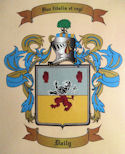
Tamiya 1:48 P-51D Mustang
 |
Larry Z. Daily’s Personal Page Tamiya 1:48 P-51D Mustang |
| This is the eigth build in my
Mustang
series. The P-51D built on the strengths of the B/C model, but addressed one major shortcoming of the B/C: limited visibility. North American cut down the rear fuselage and
added a bubble canopy for much improved visibility. Many consider the P-51D to be the definitive version of the Mustang, but I still have a personal preference for the razorback
B model. The plan for this build is to model the P-51D flown by Captain Charles E. Weaver. The aircraft had no nickname, but very prominently featured a reclining nude woman under the exhaust. The aircraft was serial number 44-72199 and was coded G4 * A. I was determined to make this model as accurate as I could, so I really dug into whatever information I could find on Weaver’s Mustang. I need to note here that Weaver actually flew three P-51D’s coded G4 * A. The first was the well-known camoflaged D (s/n 44-13691) nicknamed Passion WAGON. The second (s/n 44-72199), assigned to him in March 1945, is the subject of this project. It was put into storage on VE Day in May of 1945 and was later sold to the Swiss. Weaver’s third D (s/n 44-63779) was assigned to him post war. In searching the Internet and my stash of Mustang books, I found a number of photos that claimed to depict 44-72199 during its relatively short service life in World War II. Those photos showed aircraft with both shrouded and unshrouded exhausts and either flags or eagles as kill markings. In addition, some photos showed that the plane was equipped with fuselage formation lights and a tail warning radar (TWR) system, but in others it clearly did not have those features. Given the fact that aircraft 44-72199 was in service for, at most, a little over two months, the extensive changes (especially repainting the kill markings) seemed unlikely. There was also uncertainty about the color of the “splash” behind the nude in the nose art. Most of the manufacturers who have released decals for this aircraft have used a red splash (Kit’s World, Cutting Edge, Superscale). Cutting Edge and Kit’s World have both also produced sets with a blue splash and Kit’s World and EagleCals have sets that include a black splash. What follows is my attempt to sort out what Weaver’s plane actually looked like. Photos of Weaver’s Aircraft
That left me with one issue to resolve. The photos listed above clearly show the forward formation light on 44-72199. I’ve only found a few photos that show a good, clear side view of Mustangs with fuselage formation lights installed. All of them had a forward light and another aft of the wing. In some, the rear light was just a little aft of the antenna mast and showed in the rear bar of the national insignia. In others, it was bit forward of there and showed up in the center of the star in the national insignia. In total, I have six photos. In three of them (WD * A Ridge Runner, QP * O Red Dog XII, and VF * F Clarine), the rear light is in aft bar. In the other three (G4 * C Nooky Booky IV, G4 * G Man-o-war, and G4 * M Ain’t Misbehavin’), the light is in the center of the star. I think the pattern is clear. I plan to locate the aft light in the center of the star. This decision is supported by photo number 3, which clearly shows the aft bar and there’s no light there. At this point I have a confession to make: the model seen here is actually the third version of Weaver’s P-51D that I’ve built. The first build ended up falling far short of my expectations and had a number of flaws, many of which stemmed from confusion about exactly what the aircraft looked like. I followed the drawings that came with the decals that I used and — of course — ended up finding errors as soon as I finished the build. The second attempt fell victim to my unfamiliarity with Mr. Color paints. I was using their Super Silver to replicate the aluminum paint on the wings and learned the hard way that if Mr. Color isn't thinned properly, it generates strings of paint. It was a complete disaster. The BuildPrototype:Model: P-51D-20-NA Serial number: 44-72199 Nickname: none Pilot: Charles E. Weaver Kit: Tamiya 1:48 P-51D Mustang In addition to the kit, I also plan to use the following aftermarket parts:
|
|
[home]
[trek]
[space]
[camel]
[p-51]
[vega]
[C&O]
[professional]
|